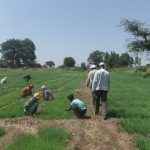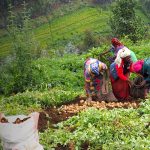Ethiopian agriculture in the news for the period April 16 - 30, 2023 highlighting current stories in agriculture and related topics in the country. Read more>>
Measuring changes in the Ethiopia’s agri-food system
Transformation of the agri-food system (AFS) is a leading pathway to achieve the USG Global Food Security Strategy Objective 1 of “Inclusive agriculture-led growth”. The AFS encompasses the primary agricultural sector, as well as all upstream and downstream agriculture-related activities. An expansion of the AFS’s off-farm components is central to the process of agricultural transformation […]
2023 GLOBAL FOOD POLICY REPORT: RETHINKING FOOD CRISIS RESPONSES
The past decade has been marked by multiple, often overlapping, crises. The COVID-19 pandemic, various natural disasters, and the ongoing war in Ukraine have all threatened the fabric of our global food systems. This string of crises has left an indelible mark. In too many places, progress in reducing poverty and malnutrition has been reversed, […]
Increasing financial access in Ethiopia through mobile money: Results from experiments to catalyze enrollment and use among women and refugees
Research Post. The mobile money revolution has begun to substantially increase financial access around the world. Mobile money accounts allow people previously excluded from the formal financial sector to access savings accounts, make payments to merchants, and make person-to-person transfers, among other services. Research has shown that mobile money access can have important effects on key outcomes […]
Impact evaluation of the SHARPE Programme in Ethiopia: Academic report
Project Paper. The Strengthening Host and Refugee Populations in Ethiopia (SHARPE) programme uses a market systems development approach to promote increased self-reliance and economic opportunities for refugees and host communities through the piloting and scaling of interventions across different sectors. This approach is based upon understanding the economic barriers that refugee and host communities face, […]
- « Previous Page
- 1
- …
- 28
- 29
- 30
- 31
- 32
- …
- 120
- Next Page »




